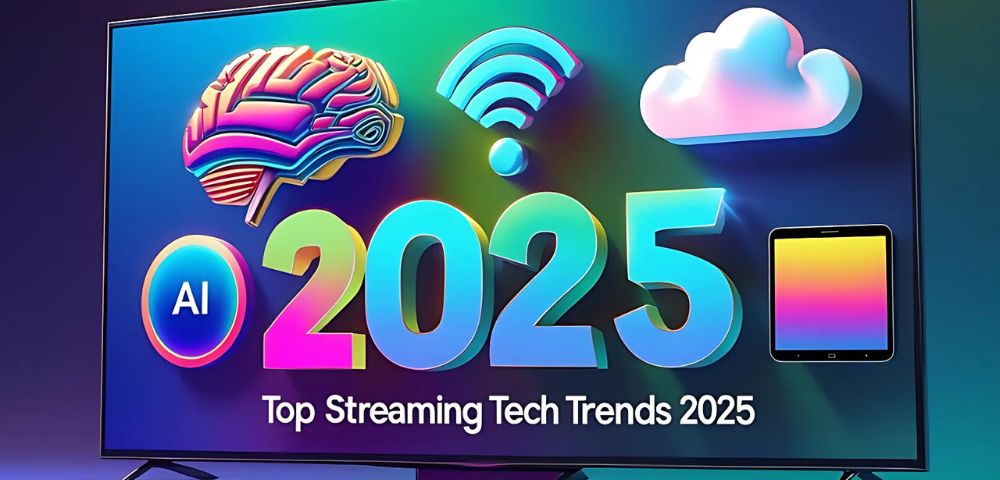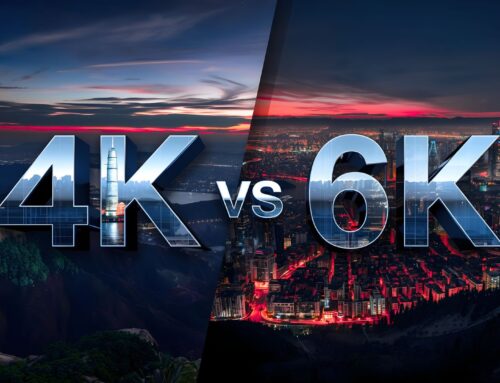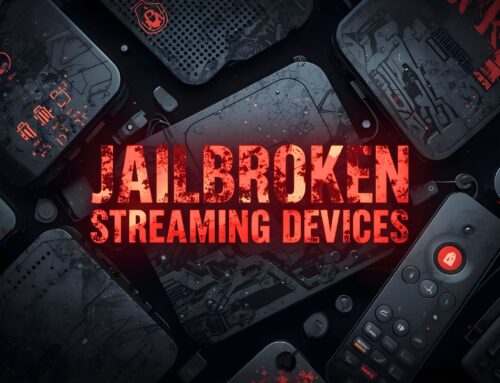Streaming technology trends are rapidly reshaping how we watch content. Over the next five years, major advancements in video quality, connectivity, and content delivery will further transform the viewing experience. This article explores the top streaming technology trends set to shape the near future and their impact on users and the industry.
The Rise of 4K and Growing Demand for 6K Streaming
One of the most visible streaming technology trends today is the steady upgrade in video resolution:
- 4K streaming has become the new standard, supported by platforms like Netflix, Disney+, and Amazon Prime Video.
- Consumers are beginning to look beyond 4K, seeking even sharper visual experiences for larger screens or more immersive content.
Although true 8K adoption remains limited, 6K streaming is emerging as a practical middle ground:
- YouTube hosts an expanding library of 6K videos, especially in genres like travel and nature, where ultra-fine detail adds value.
- Streaming services are adopting newer compression formats such as AV1 and VVC, which enable high-resolution playback without requiring massive bandwidth.
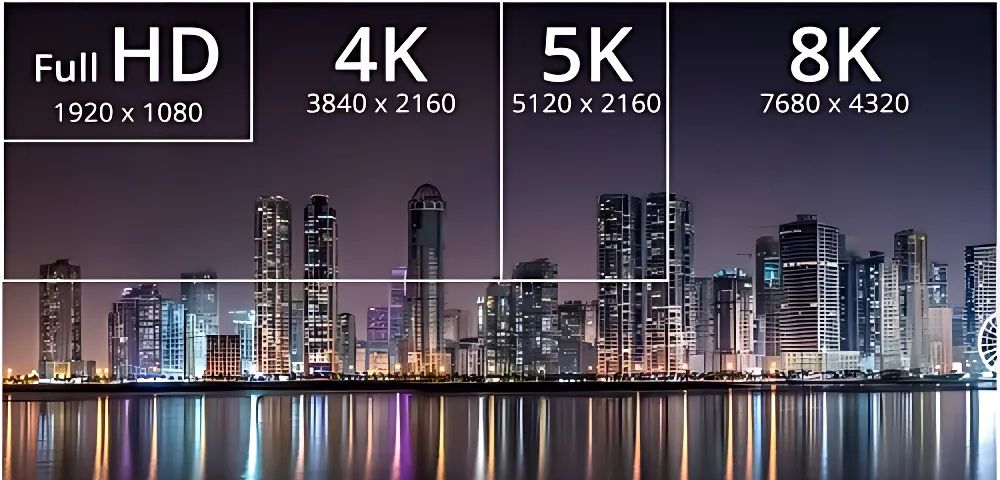
TV and device manufacturers are adapting quickly:
- Leading brands like Samsung and LG are enhancing support for both 4K and 6K playback in their newer models.
- Consumer demand is rising for affordable devices like the 6K TV box, ideal for viewers who want premium video quality without the price tag or internet requirements of full 8K.
How AI and Machine Learning Shape Streaming Technology Trends
Among the most influential streaming technology trends, AI and machine learning are increasingly shaping how streaming services personalize content:
- Netflix’s recommendation engine analyzes user behavior — such as watch time, skips, and likes/dislikes—to suggest tailored shows and movies.
- Shortly, expect even deeper personalization. For example, Spotify’s Discover Weekly uses AI to recommend music based on your listening history.
- Similarly, platforms like Hulu are experimenting with AI that dynamically adjusts ad length and placement depending on viewer engagement.
These developments clearly demonstrate how streaming technology trends are reshaping not only what we watch but also how we interact with content.
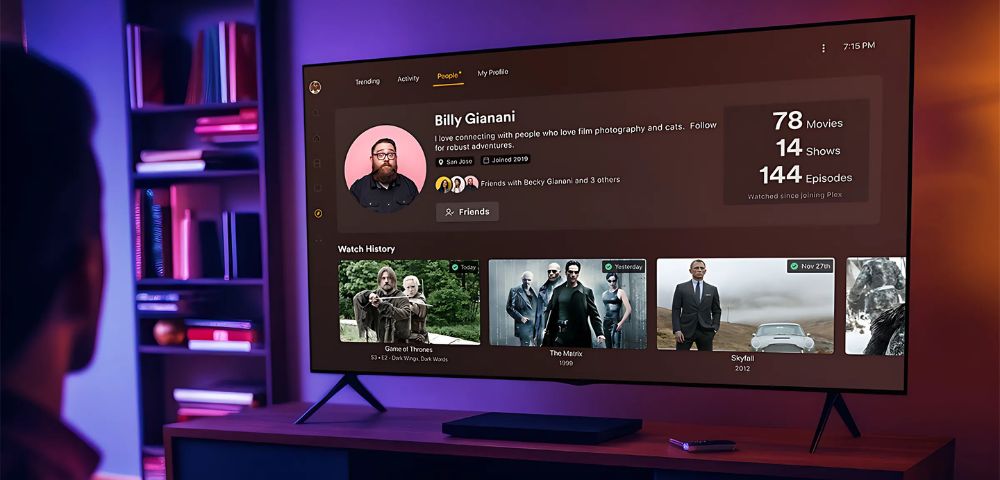
Another example is Plex’s “Discover” feature, which integrates your streaming services and recommends content across platforms. This level of personalization will likely expand beyond traditional platforms into IPTV ecosystems as well, raising more interest in topics like ‘’What is IPTV?‘’ and how it fits into the future of intelligent content delivery. AI will increasingly act as a content concierge, reflecting one of the most impactful streaming technology trends driving the future of home entertainment.
The Growing Impact of 5G on Streaming Quality and Accessibility
5G is one of the most game-changing streaming technology trends. With download speeds exceeding 1 Gbps and latency as low as 1 ms, 5G networks are making mobile 4K and 8K streaming a reality. For example, T-Mobile and Verizon have both launched 5G home internet services that support streaming-heavy households. In sports, Verizon partnered with the NFL to stream 5G-enabled immersive content during live games.
Live events, mobile streaming, and interactive video will all benefit from this faster, more reliable connection. This is especially valuable in rural or underserved areas where traditional broadband has limitations.
Expansion of Multi-Screen and Cross-Device Streaming Experiences
Today, it’s common to start watching a show on your phone during your commute, continue on a tablet at lunch, and finish on a smart TV at night. This seamless experience is supported by cloud-based account syncing across devices. Disney+ and Netflix allow users to pick up exactly where they left off across devices. Apple’s “Up Next” queue and Google TV’s watchlist are other examples of multi-screen integration.

In the next five years, this experience will become even smoother. Devices like Amazon Fire TV and Android TV boxes will continue to enhance support for account continuity, especially as more users demand flexible viewing options or want the ability to watch TV abroad while keeping access to their usual content.
Cloud-Based Streaming and Edge Computing for Faster Content Delivery
To reduce lag and buffering, platforms are turning to edge computing, which places data closer to users. Netflix, for example, operates its own content delivery network (CDN) called Open Connect, which includes edge servers located in local ISPs around the world. Similarly, streaming apps use Amazon CloudFront and Google Cloud CDN to improve content delivery speeds and reliability.
As one of the more technical streaming technology trends, edge computing is expected to evolve with even smaller, more distributed edge nodes, enabling real-time analytics, personalized content adjustments, and a more responsive UI for viewers.
Increased Adoption of Interactive and Social Streaming Features
Viewers now expect more than just passive consumption. Twitch pioneered this trend with real-time chat, donations, and streamer interaction.
Netflix’s interactive shows like Black Mirror: Bandersnatch and You vs. Wild allowed viewers to choose story paths. Disney+ is exploring watch parties with synchronized playback and shared reactions. Apps like Scener, Teleparty (formerly Netflix Party), and Amazon’s Watch Party are integrating social features into viewing experiences.

In the next few years, we’ll likely see more co-viewing rooms, interactive voting, and multi-perspective live sports streaming becoming standard.
The Evolving Role of TV Boxes in Modern Streaming Technology Trends
TV boxes are often underestimated in the discussion of streaming technology trends, but they are becoming increasingly central to the home entertainment ecosystem. Modern devices like the NVIDIA Shield, SuperBox S6 Pro, and Firestick offer powerful processing capabilities, enabling smooth 4K (and future 8K) streaming, voice control, and access to thousands of apps. The NVIDIA Shield supports AI upscaling, turning HD content into near-4K in real-time.

In regions where smart TVs are either outdated or too expensive to replace, a capable Android TV box serves as an affordable upgrade path. With the growth of services requiring higher performance (cloud gaming, multi-view streaming, or AR integration), the role of standalone TV boxes is set to expand dramatically in the coming years.
Preparing for the Future of Streaming
Streaming is no longer just about watching content — it’s about how we interact with technology, how we personalize experiences, and how we stay connected in real time. The trends ahead point to a smarter, faster, and more user-centered era of entertainment. Here’s what that means for you:
- Smarter decisions start now: The devices and platforms you choose today will shape how prepared you are for what’s coming.
- Flexibility matters: Support for 4K/8K, AI features, and multi-device syncing will become the new baseline.
- Future-ready devices make a difference: Premium TV boxes like SuperBox already support voice control, parental filters, 6K playback, and dual-band WiFi, offering a strong foundation for what’s next.
- Staying ahead means staying relevant: Whether you’re a viewer or a service provider, adapting early gives you a real advantage.
By understanding these streaming technology trends, you’re not just catching up — you’re setting yourself up to thrive in the future of entertainment.
Contact us: [email protected]

